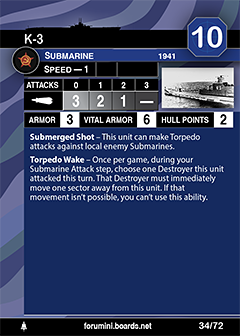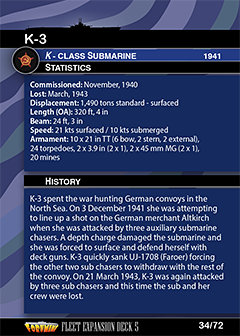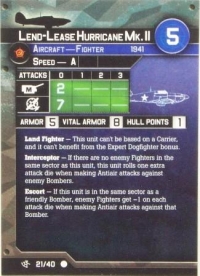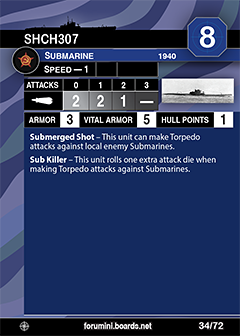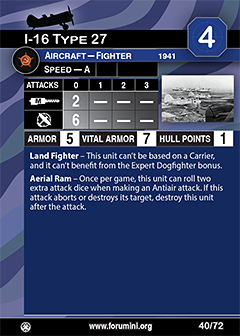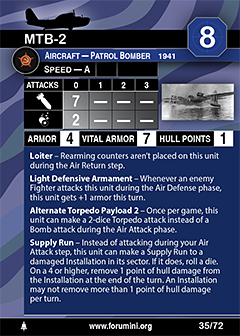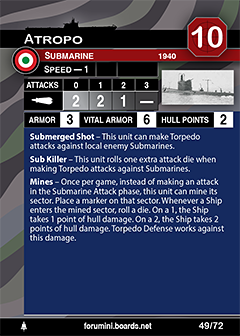Prototype: Soviet submarine K-3 was a K-class submarine of the Soviet Navy during World War II.
At first located in the Baltic Sea, she was relocated to the Northern Fleet on 8 November 1941. She engaged enemy shipping with torpedoes, with gunfire, and as minelayer.
On 3 December 1941, after a failed torpedo attack, K-3 was damaged by depth charges from the German submarine chasers UJ-1403, UJ-1416, and UJ-1708. K-3 was forced to surface and engaged in a gun battle the three attacking units, sinking UJ-1708 and forcing the other two ships to withdraw.
Class History: The design was approved in 1936 as a long range "cruiser submarine" with a heavy torpedo and gun armament. The boats could operate as a "fleet submarine" working with the battle fleet or as long range commerce raiders. They were a significantly improved version of the Pravda class and overcame most of their shortcomings (Conway's Fighting Ships). The double hull was divided into seven compartments. It was originally planned to carry a small floatplane for scouting but this concept was abandoned when the planned aircraft proved too flimsy.
Yakubov and Worth state that these were the most successful Soviet submarines of the World War II era, with high speed and good seakeeping. This class of submarine possessed better ventilation and air conditioning systems than any other class of Soviet submarine in World War II. They had amenities such as a bunk for every sailor, small cabins for each officer, showers, electric heaters (this class was designed to operate primarily in the Arctic), and an electric galley. The hull provided spacious accommodation. Diving time was 60 seconds. American naval constructors inspected K-21 in 1944, and thought the design to be workmanlike but technically inferior to contemporary American boats[citation needed] such as the Gato-class submarines
Yakubov and Worth state that these were the most successful Soviet submarines of the World War II era, with high speed and good seakeeping. This class of submarine possessed better ventilation and air conditioning systems than any other class of Soviet submarine in World War II. They had amenities such as a bunk for every sailor, small cabins for each officer, showers, electric heaters (this class was designed to operate primarily in the Arctic), and an electric galley. The hull provided spacious accommodation. Diving time was 60 seconds. American naval constructors inspected K-21 in 1944, and thought the design to be workmanlike but technically inferior to contemporary American boats[citation needed] such as the Gato-class submarines
Item created by: gdm on 2020-01-04 09:20:58. Last edited by gdm on 2022-10-10 12:31:41
If you see errors or missing data in this entry, please feel free to log in and edit it. Anyone with a Gmail account can log in instantly.
If you see errors or missing data in this entry, please feel free to log in and edit it. Anyone with a Gmail account can log in instantly.


